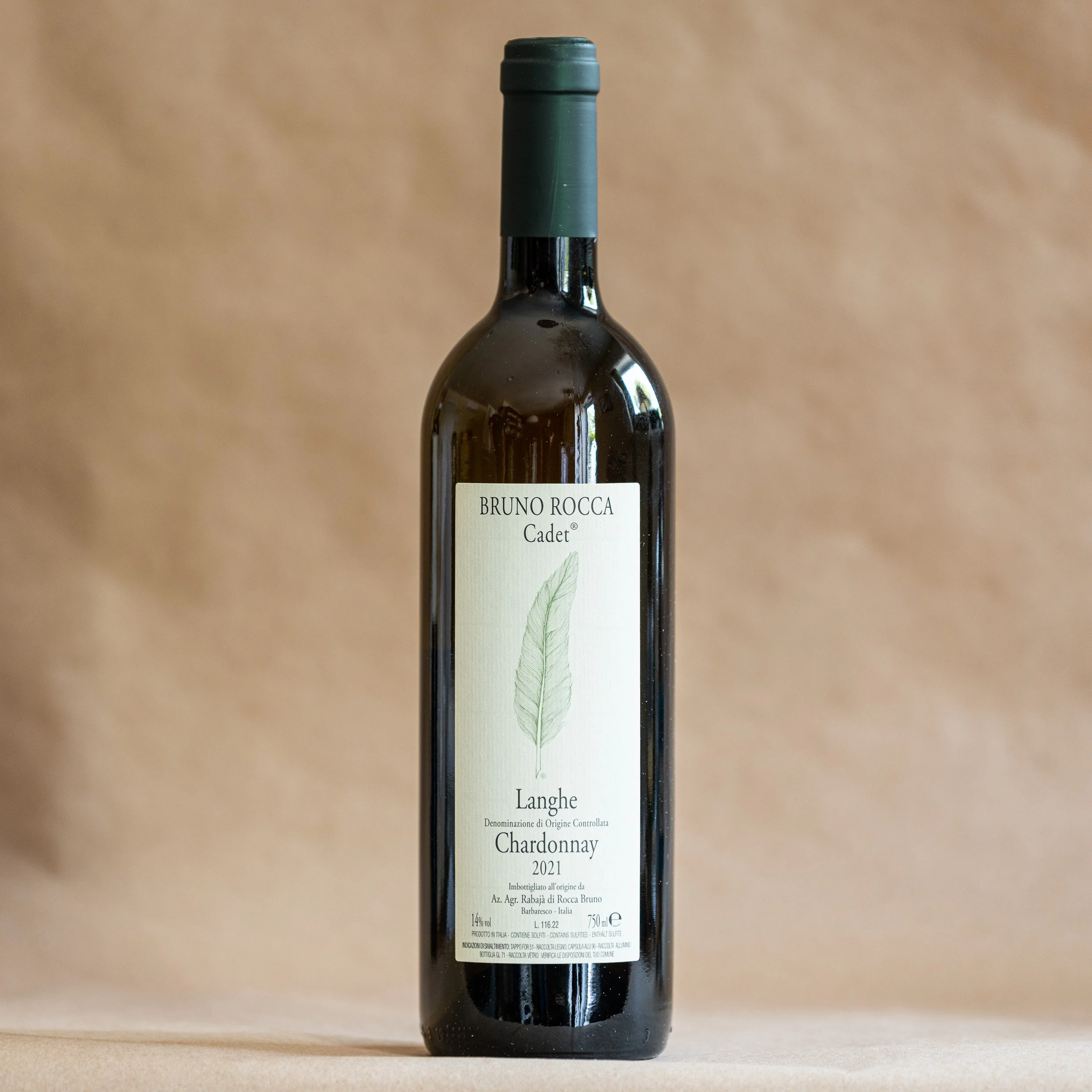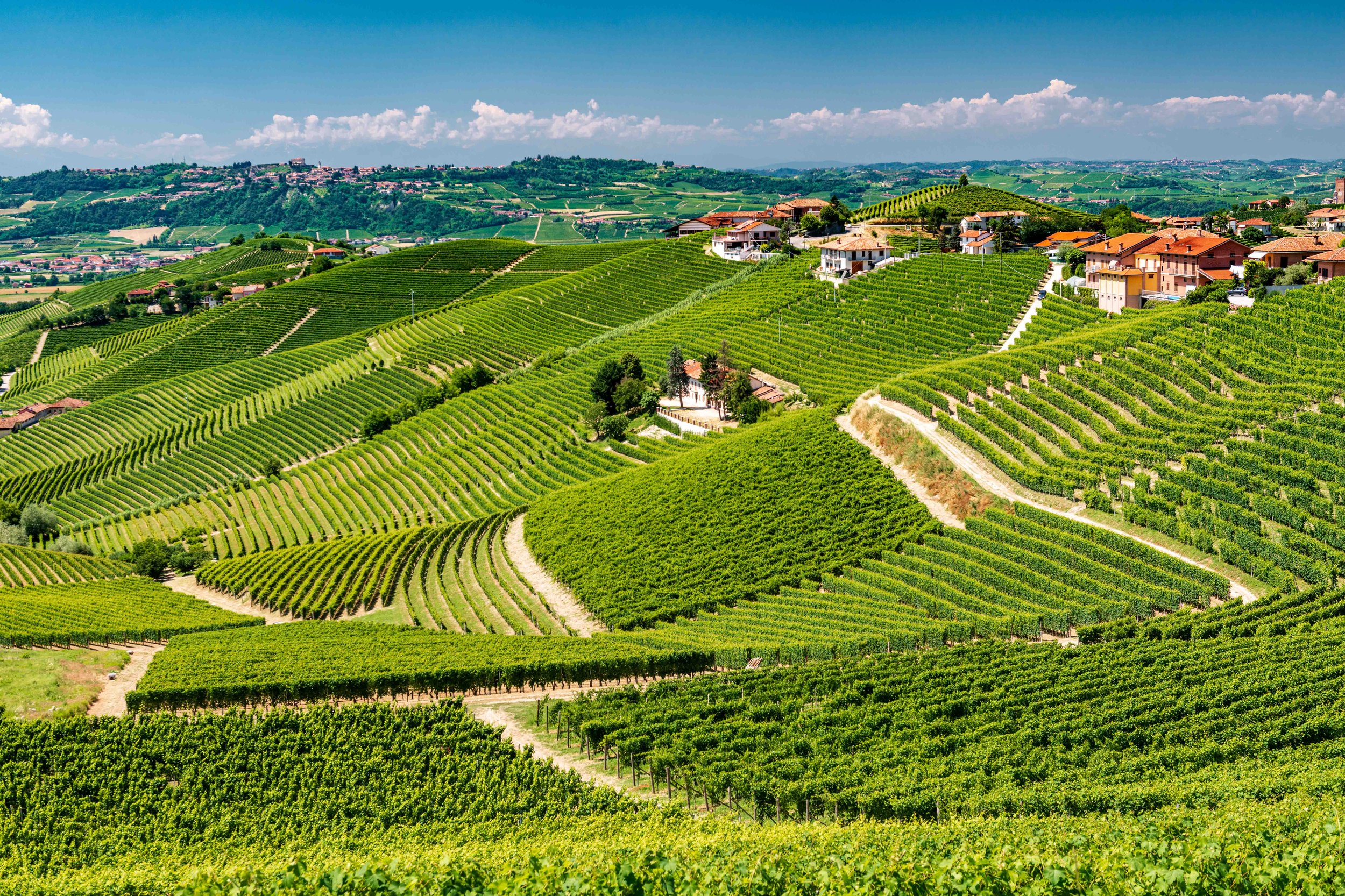


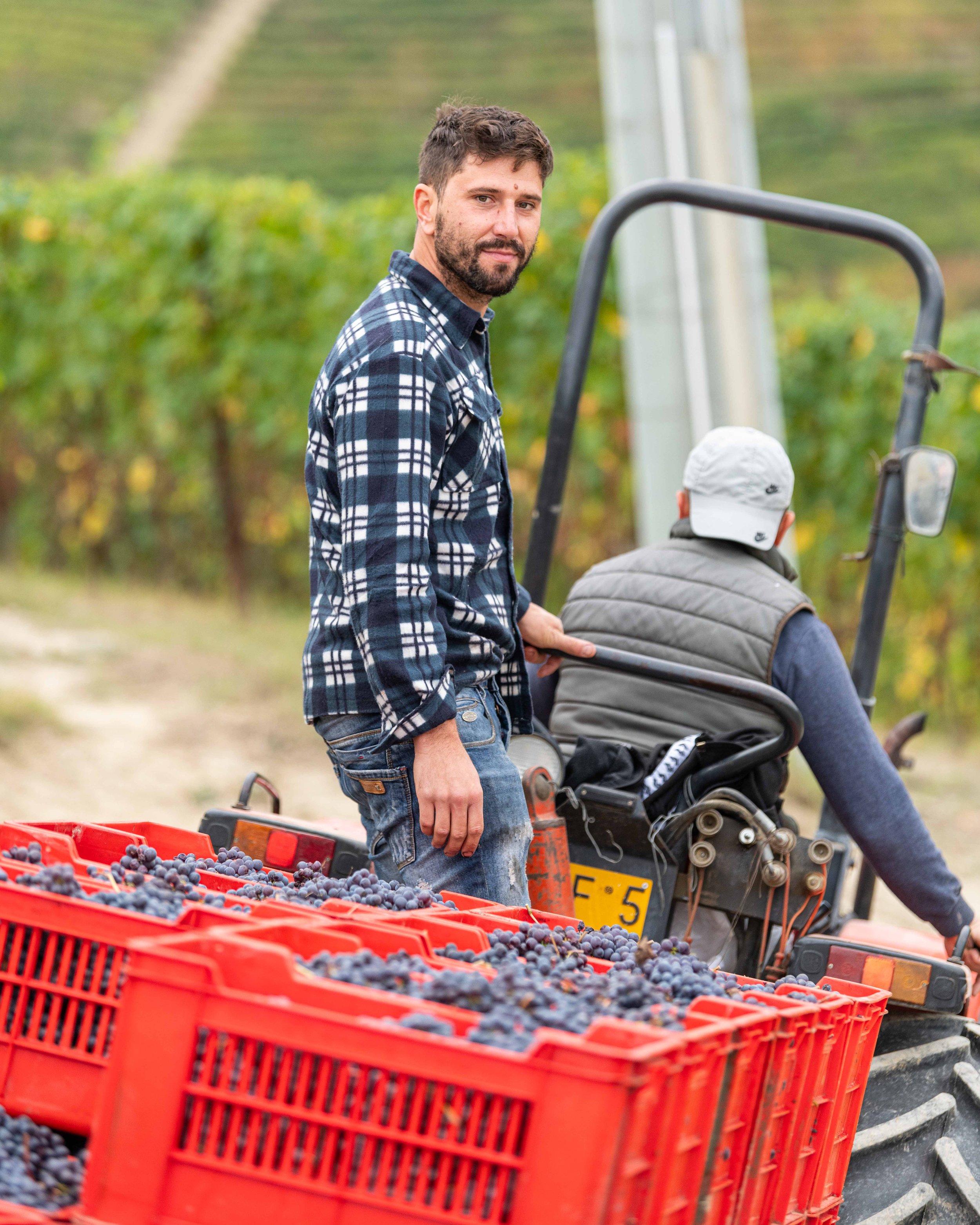
















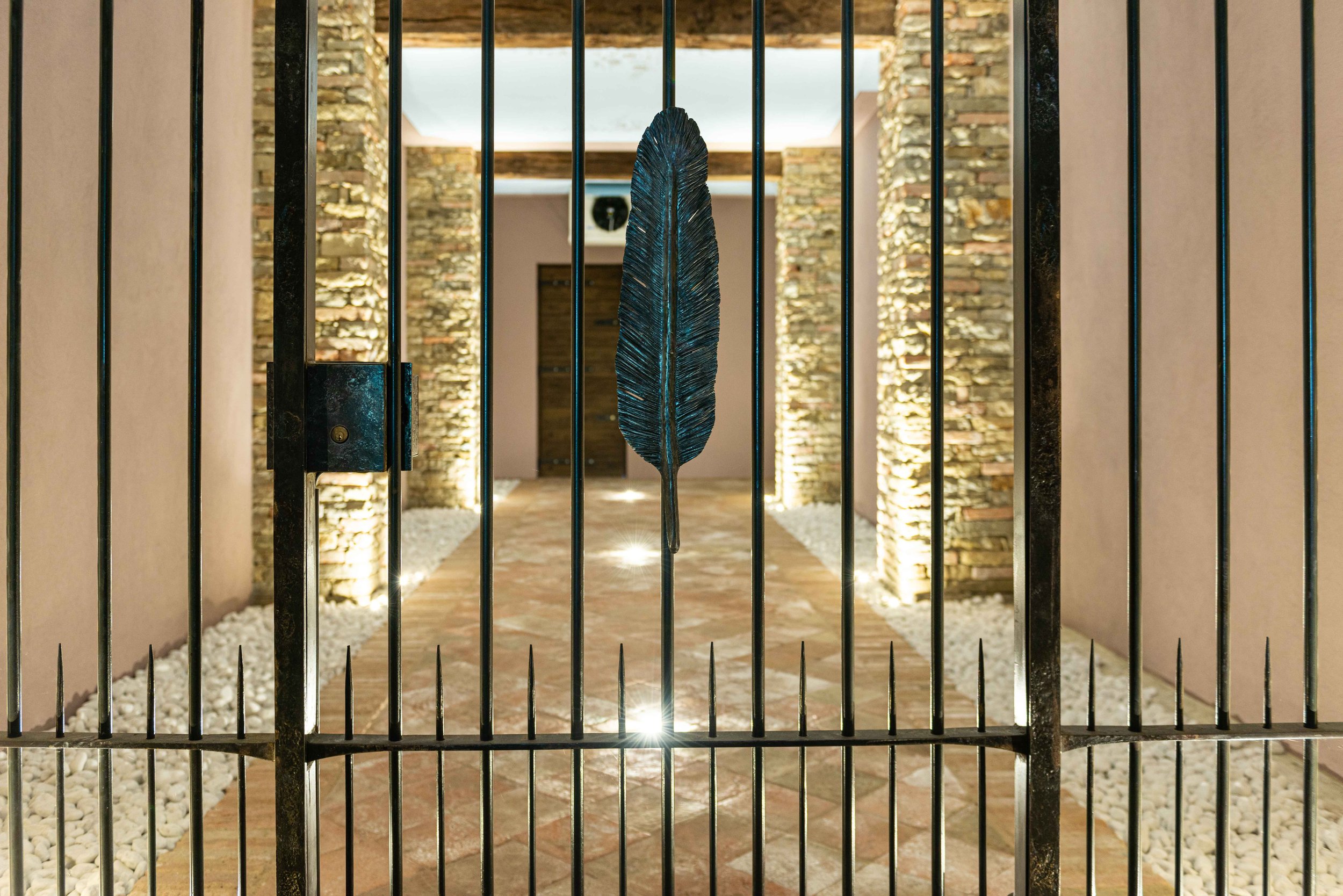


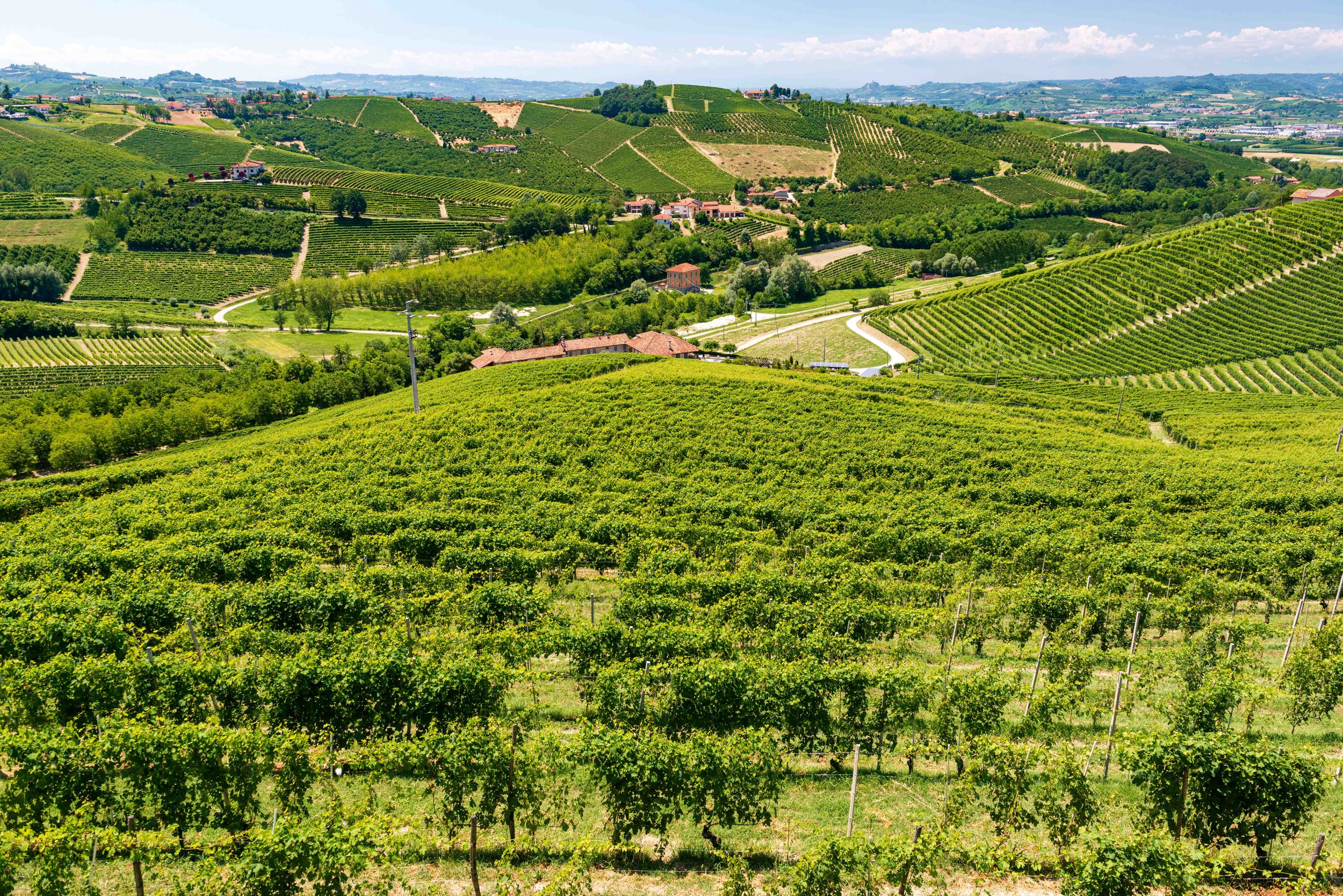



BRUNO ROCCA
Who: Francesco Bruno and children, Luisa and Francesco
Where: Barbaresco, Cuneo (Piemonte, Italy)
What grapes: Nebbiolo, Chardonnay, Barbera
Key facts: The Rocca family are ascending the quality-laden ranks of Barbaresco viticulture. Smart vineyard purchases, meticulous farming, and the energy of two generations working together with love for their homeland are driving this remarkable push to the summit.
Website: https://www.brunorocca.it/en/
Instagram: @luisa_rocca
Bruno Rocca Rosato Langhe DOC
Viticulture: Sustainable/practicing organic
Soil type: Calcareous clay
Grapes: Nebbiolo rosé biotype
Method of fermentation: Fermented whole cluster in stainless steel for a couple of days, then aged for three months in stainless steel.
Bold aromas of macerated raspberries and roses. Classic flavors of nebbiolo on the palate, bright red fruit with a very light tannic finish. Made from the Nebbiolo rosé biotype, which is often comingled in the fields of Barbaresco with Lampia and Michet. It’s a less fertile biotype, with small bunches and low yield. Light in color, but aromatically intense.
Bruno Rocca “Cadet” Chardonnay Langhe DOC
Viticulture: Sustainable/practicing organic
Soil type: Limestone and marl
Grapes: Chardonnay
Method of fermentation: Fermented with wild yeast for 15-20 days at 15 degrees Celsius. Aged in a mix of 80% stainless steel and 20% French barrique.
From the eastern side of the Fausoni vineyard, which wraps around the hill underneath the village of Nieve. The Rocca family have farmed it since 1991. The site is known for making structured wines.
Bruno Rocca “Trifolé” Dolcetto d’Alba DOC
Viticulture: Sustainable/practicing organic
Soil type: Limestone and marl
Grapes: Dolcetto
Method of fermentation: Fermented in stainless steel for 7-10 days, with skin contact. Matured in stainless steel.
Bruno Rocca Barbera d'Alba DOC
Viticulture: Sustainable/practicing organic
Soil type: Calcareous clay/marl
Elevation: 250m above sea level
Grapes: Barbera
Method of fermentation: Hand-picked in the Currá and Fausoni (southern part) vineyards. Fifty year-old vines. Fermented in stainless steel for two weeks. Aged in French barriques.
750 ml.
1.5 L
Bruno Rocca “Fralù” Nebbiolo Langhe DOC
Viticulture: Sustainable/practicing organic
Soil type: Sant’ Agata marl, clay-limestone
Elevation: 250m above sea level
Grapes: Nebbiolo
Method of fermentation: Fermented for two weeks in stainless steel. Aged in French barrique for one year. From 10-year-old vines.
Bruno Rocca Barbaresco DOCG
Viticulture: Sustainable/practicing organic
Soil type: Calcareous clay. Blue/white/grey marl, limestone, sand.
Elevation: 220-290m above sea level
Grapes: Nebbiolo
Method of fermentation: Spontaneous alcoholic fermentation, malolactic fermentation in wood barrel. All parcels are vinified separately and then blended together. All the oak is at least 40 months old, seasoned outside to minimize imprint on the finished wine. Minimal sulfur is added.
Bruno Rocca “Maria Adelaide” Barbaresco DOCG
Viticulture: Sustainable/practicing organic
Soil type: Calcareous clay
Elevation: 300m above sea level
Grapes: Nebbiolo
Method of fermentation: Spontaneous alcoholic fermentation, malolactic fermentation in wood barrel. All the oak is at least 40 months old, seasoned outside to minimize imprint on the finished wine. Minimal sulfur is added.
It’s a selection of the best fruit from the Rabajà and Currà crus.
Bruno Rocca “Marcorino” Barbaresco DOCG
Viticulture: Sustainable/practicing organic
Soil type: Limestone, clay, and silt.
Elevation:
Grapes: Nebbiolo vines planted in 1963
Method of fermentation: In stainless steel for 30-40 days, with submerged cap. Aged for 12-16 months in large barrels. Harvested late, as the site is southeast facing, facilitating long maturations.
They purchased the land in 2016, less than a hectare just below the village of Nieve. The vines were planted in 1963, on painstakingly selected old rootstocks recovered and manually grafted from an even older nearby Barbaresco vineyard. Yield here is low: less than 30 hectoliters per hectare.
Bruno Rocca “Currà” Barbaresco DOCG
Viticulture: Sustainable/practicing organic
Soil type: Calcareous clay
Elevation: 200-300m above sea level
Grapes: Nebbiolo
Method of fermentation: Spontaneous alcoholic fermentation in stainless tanks.Malolactic fermentation in wood barrel. All the oak is at least 40 months old, seasoned outside to minimize imprint on the finished wine. Minimal sulfur is added. From a six hectare southwest-facing parcel formerly owned by the curate of Nieve parish. These vines are 30 years old.
Bruno Rocca “Rabajà” Barbaresco DOCG
Viticulture: Sustainable/practicing organic
Soil type: Calcareous clay
Elevation: 310m above sea level
Grapes: Nebbiolo
Method of fermentation: Spontaneous alcoholic fermentation in stainless steel vessel for three weeks. Malolactic fermentation in wood barrel. All the oak is at least 40 months old, seasoned outside to minimize imprint on the finished wine. The wine is aged for 12 months in French oak barrique, and 12 months in larger French barrels. Minimal sulfur is added.
Grandparents Francesco and Maria Adelaide Rocca bought a portion of the Rabajà vineyard in 1958, including the eponymous farmhouse which is now their winery. The wine from these wines was first bottled by the Rocca family in 1978. Rabajà is absolutely a grand cru of Barbaresco. If you want to understand the greatness of Barbaresco, this is essential drinking. (JM)
Bruno Rocca “Currà” Barbaresco Riserva DOCG
Viticulture: Sustainable/practicing organic
Soil type: Calcareous clay. Blue/white/grey marl, limestone, sand.
Elevation: 200-300m above sea level
Grapes: Nebbiolo
Method of fermentation: Vinified in wooden casks for 25-28 days.
From a six hectare southwest-facing parcel formerly owned by the curate of Nieve parish. These vines are 30 years old.
Bruno Rocca “Rabajà” Barbaresco Riserva DOCG
Viticulture: Sustainable/practicing organic.
Soil type: Calcareous clay. Blue/white/grey marl, limestone, sand.
Elevation: 310m above sea level
Grapes: Nebbiolo
Method of fermentation: Vinified in wooden casks for 25-30 days. Matured in French oak casks for 24-26 months.
From 3.5 hectares owned by the Rocca family since 1958. Southwest facing. These vines are half a century old.
In January I found myself in the courtyard of Bruno Rocca’s winery. It’s a striking location, perched above the storied Rabaja vineyard. Bruno and his children own a large swath of this storied cru. It was bitterly cold for our morning appointment. Mercifully, Luisa Rocca kept the vineyard tour brief. Instead of a blustery stroll, she allowed ample time to consider her family’s impressive range of wines in the relative warmth of their tasting room. The wines were superb. I didn’t expect to receive any bottles this year. Luisa made it clear that allocations are scant: their cellar is too empty. I believe lobbying by close friends, Piedmontese and American, opened this door for Piedmont Wine Imports, and our customers. I’m grateful for Luisa’s generosity.
The family doesn't apply synthetic products in their 12 hectares of vineyards. Compost comes from non-industrial farms, and is aged for two years under straw. It’s transformed by earthworms. They don’t cut vineyard grasses. Instead, Rocca composts vegetative material into “green manure” by foot traffic. They sow oats, barley, buckwheat and wildflowers between the vine rows. They maintain a “living database” of 60+ year old Nebbiolo clones in the nearby village of Nieve. They hand-harvest all the fruit, destem, and ferment the grapes whole berry for an average of 40 days. The Barbaresco wines age in oak. Everything else is made in stainless tanks. Native yeast strains are cultivated to start fermentations.


